Deep within the world’s most remote jungles, some insects defy the imagination. These creatures are often stunning, bizarre, and unlike anything you might find in your backyard. These jungles offer the perfect backdrop for the world’s most unusual insects to thrive, each one playing a vital role in the ecosystem.
Hercules Beetle (Rainforests of Central and South America)
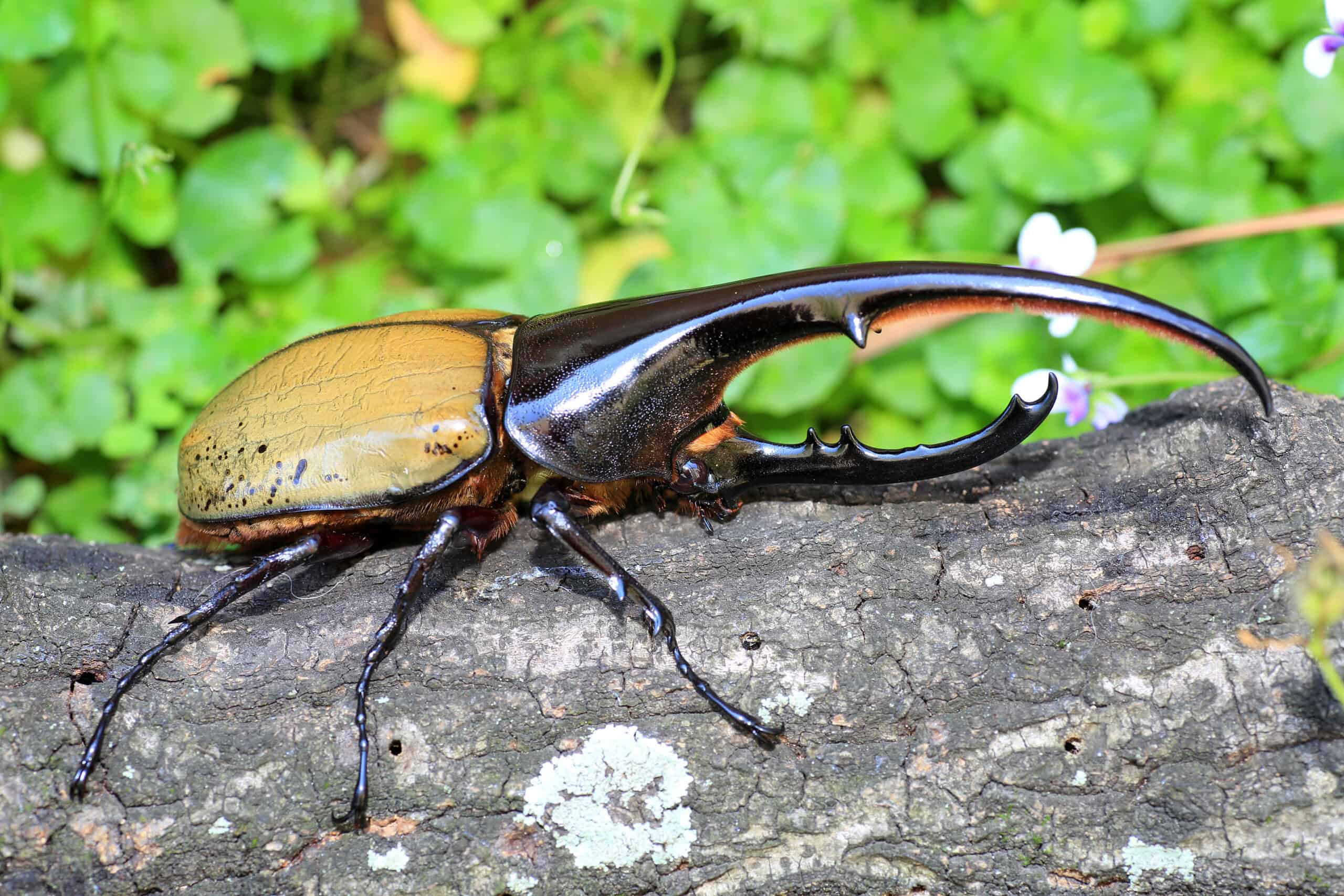
The Hercules Beetle is a true giant of the insect world. It can grow up to seven inches long, making it one of the largest beetles on the planet. Males have a massive horn on their heads, used to battle rivals for mates. Its body is covered in a hard, shiny shell, which can vary from green to brown. Despite its fearsome appearance, the Hercules Beetle is harmless to humans, feeding mainly on rotting wood and decaying fruit.
Goliath Beetle (Congo Rainforest, Africa)
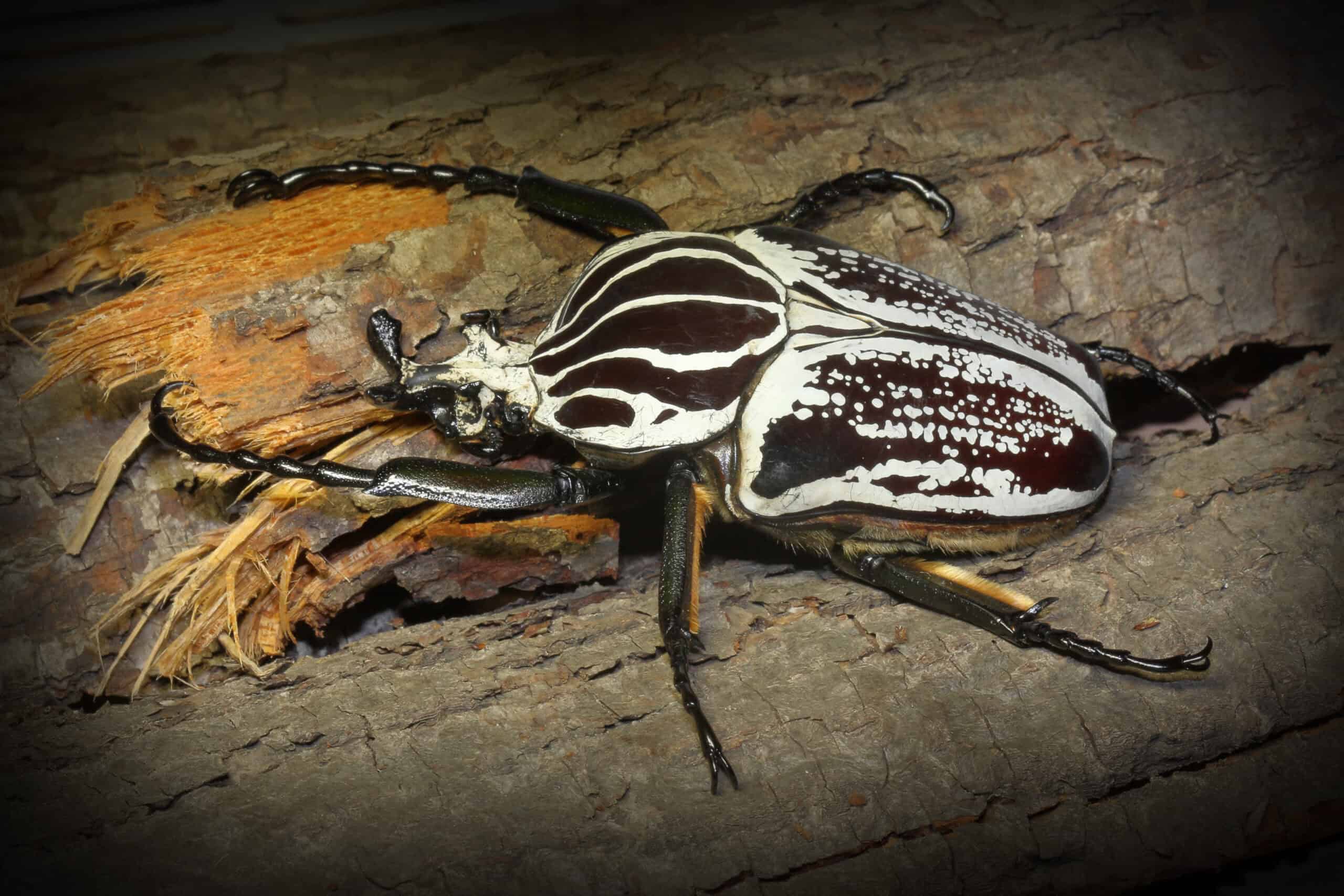
Goliath Beetles are some of the heaviest insects, weighing as much as a small rodent. These beetles have a striking black-and-white pattern on their shell. Their strong mandibles allow them to feed on tree sap and fruit. Males are larger than females and often fight for dominance during mating season. These beetles also have wings, though their bulky bodies make flying a bit clumsy.
Orchid Mantis (Southeast Asian Rainforests)
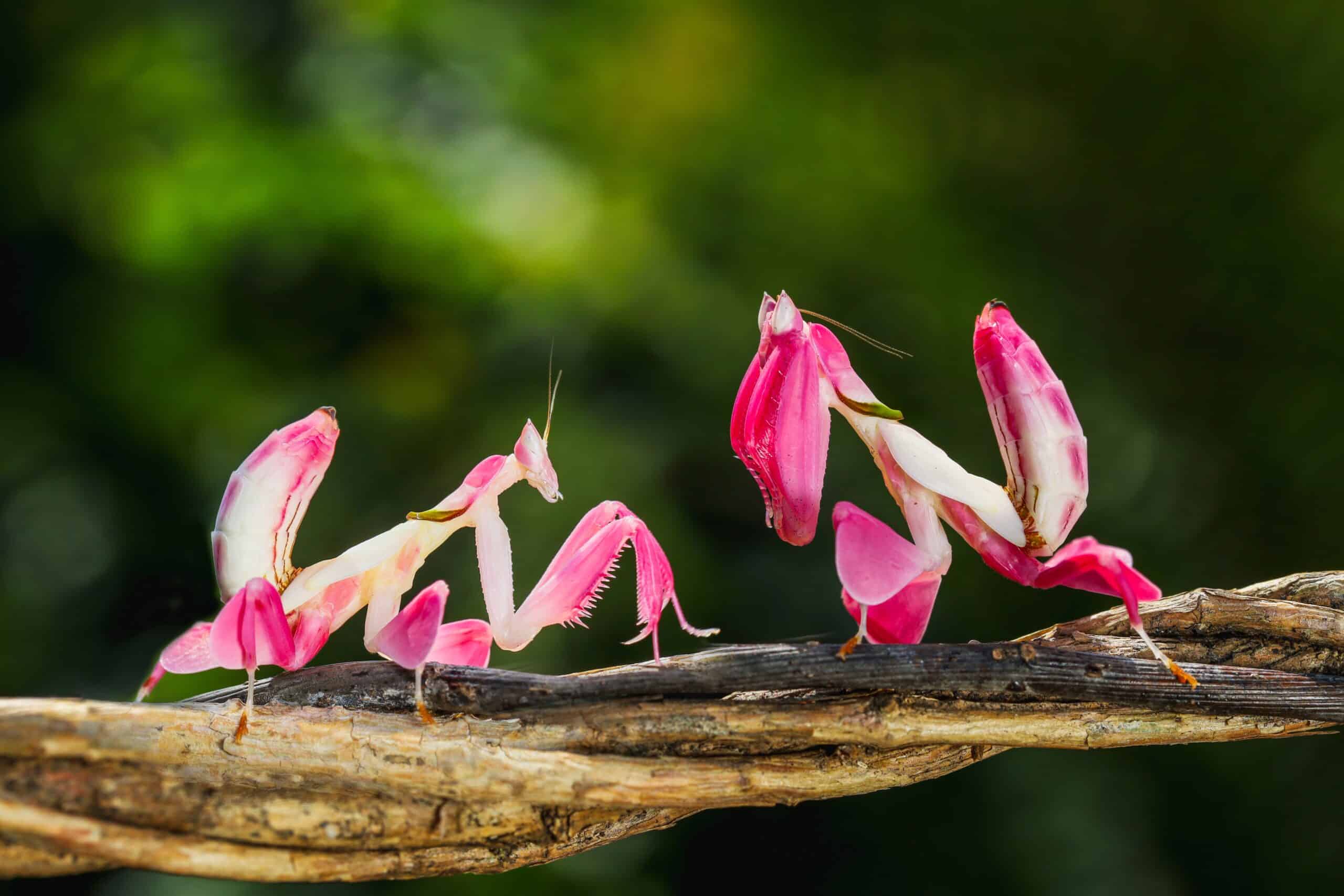
The Orchid Mantis is a master of disguise. Its delicate body closely resembles the petals of an orchid, blending seamlessly into its environment. This camouflage helps it ambush unsuspecting prey, primarily insects. The Orchid Mantis uses its front legs to snatch its meal in the blink of an eye. Its beautiful appearance has made it a popular insect among nature enthusiasts and photographers.
Jungle Nymph (Rainforests of Southeast Asia)
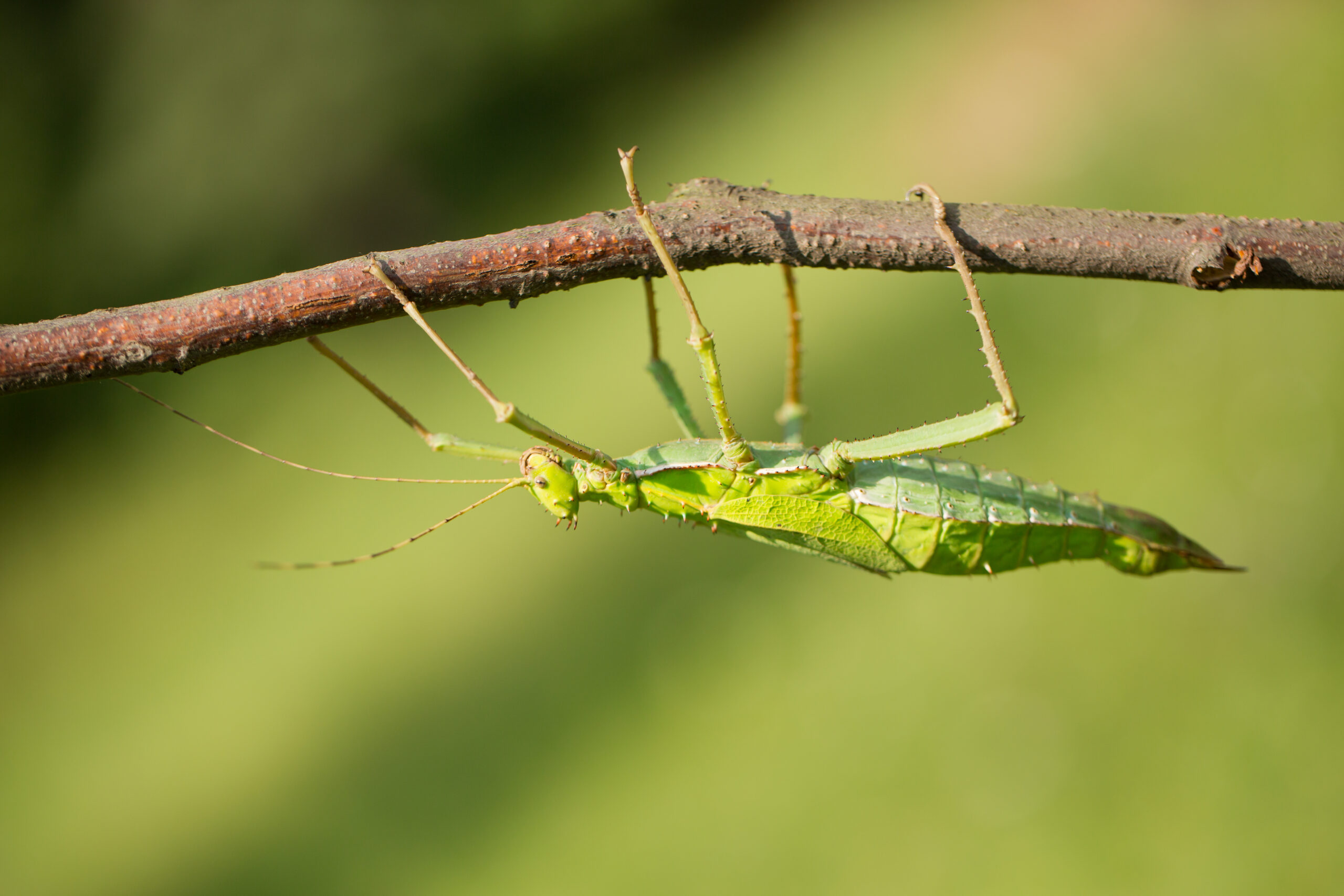
The Jungle Nymph is one of the largest stick insects in the world. It can reach up to 10 inches in length and has a robust, green body. Females are larger and bulkier than males, with thorn-like spikes on their legs for defense. They are herbivores, feeding on leaves in the dense jungles where they are native. Their impressive size and unique appearance make them a standout among insects.
Lanternfly (Amazon Rainforest)

The Lanternfly is known for its unusually long, snout-like head. Its bright colors warn predators of its toxicity. Lanternflies are often spotted resting on tree trunks in the Amazon rainforest. Despite their name, they do not glow, but their colorful wings are spectacular. Their odd appearance has led to many myths, but they are harmless sap-suckers.
Malaysian Shield Mantis (Borneo Rainforest)
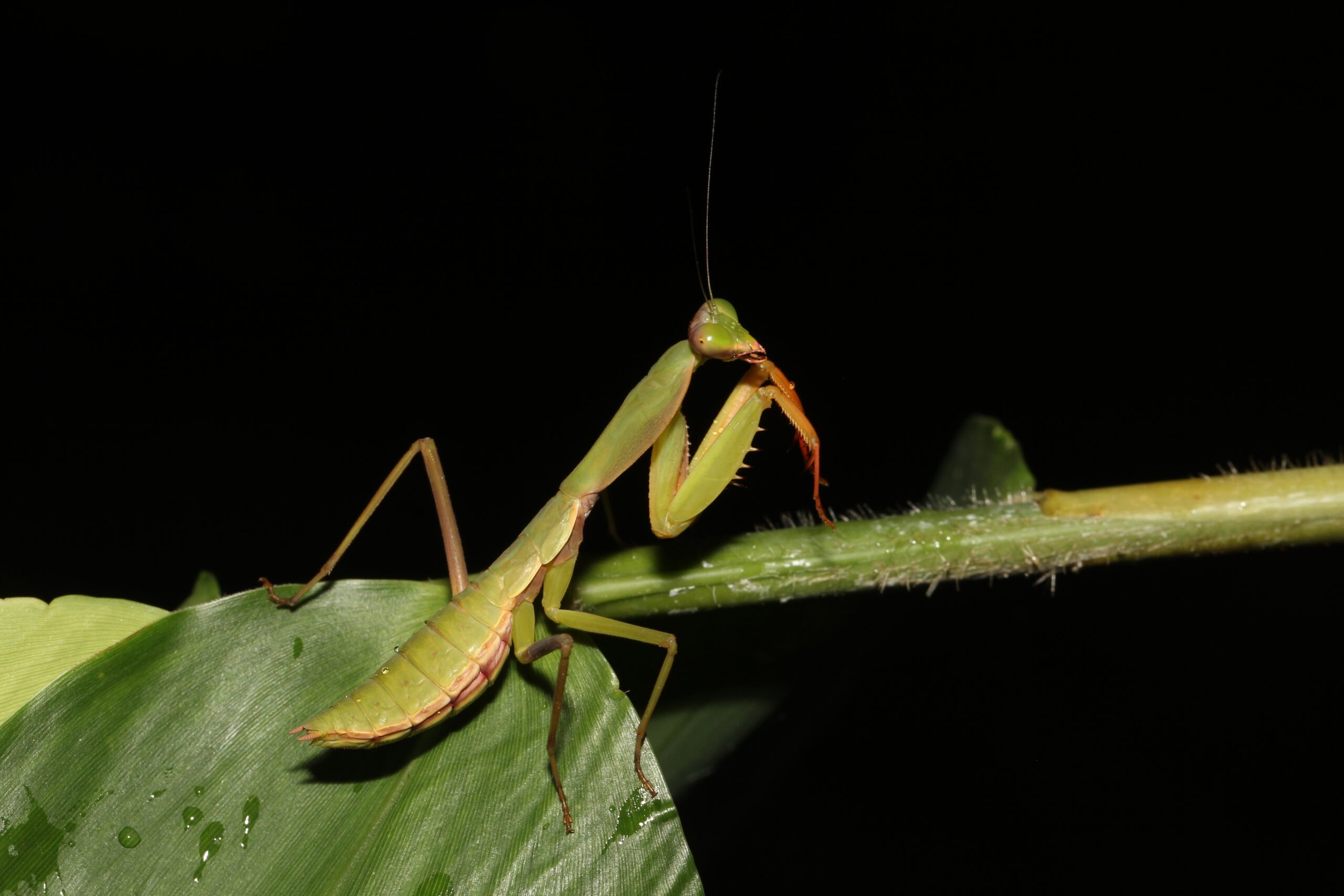
The Malaysian Shield Mantis gets its name from the large, leaf-like plate on its back. This shield helps it blend into its surroundings and avoid predators. It is an expert hunter, using its spiny front legs to capture small insects. Its bright green color makes it look like a living leaf, enhancing its camouflage. These mantises are slow movers but highly effective predators.
Atlas Moth (Southeast Asian Rainforests)
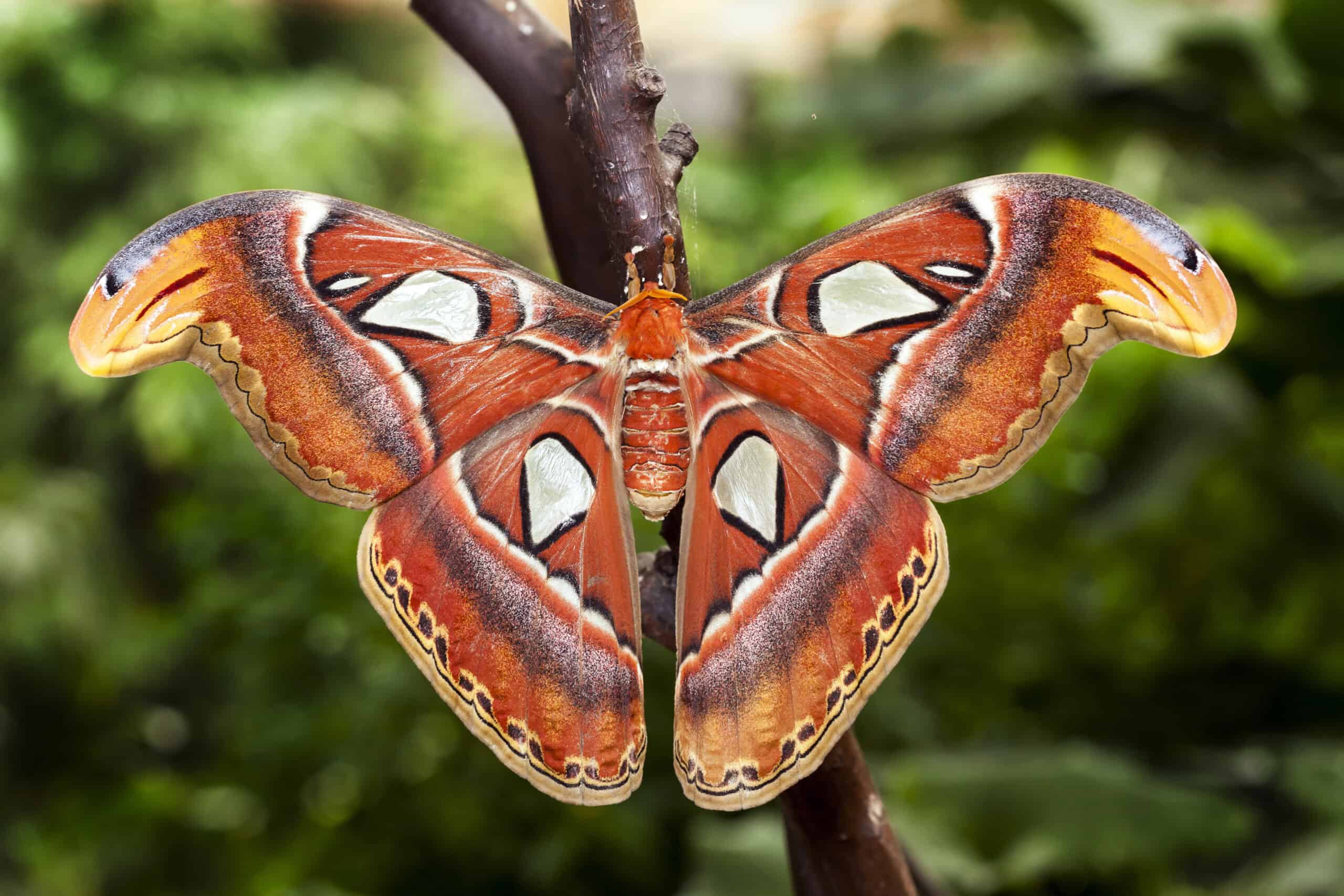
The Atlas Moth is one of the largest moths in the world, with a wingspan of up to 12 inches. Its wings are covered in intricate patterns resembling the eyes of a snake. This pattern helps deter predators, giving the moth a fighting chance in the wild. The moth’s life as an adult is short, as it doesn’t have a mouth and relies on stored energy. Despite this, the Atlas Moth is a symbol of beauty and mystery in the insect world.
Titan Beetle (Amazon Rainforest)
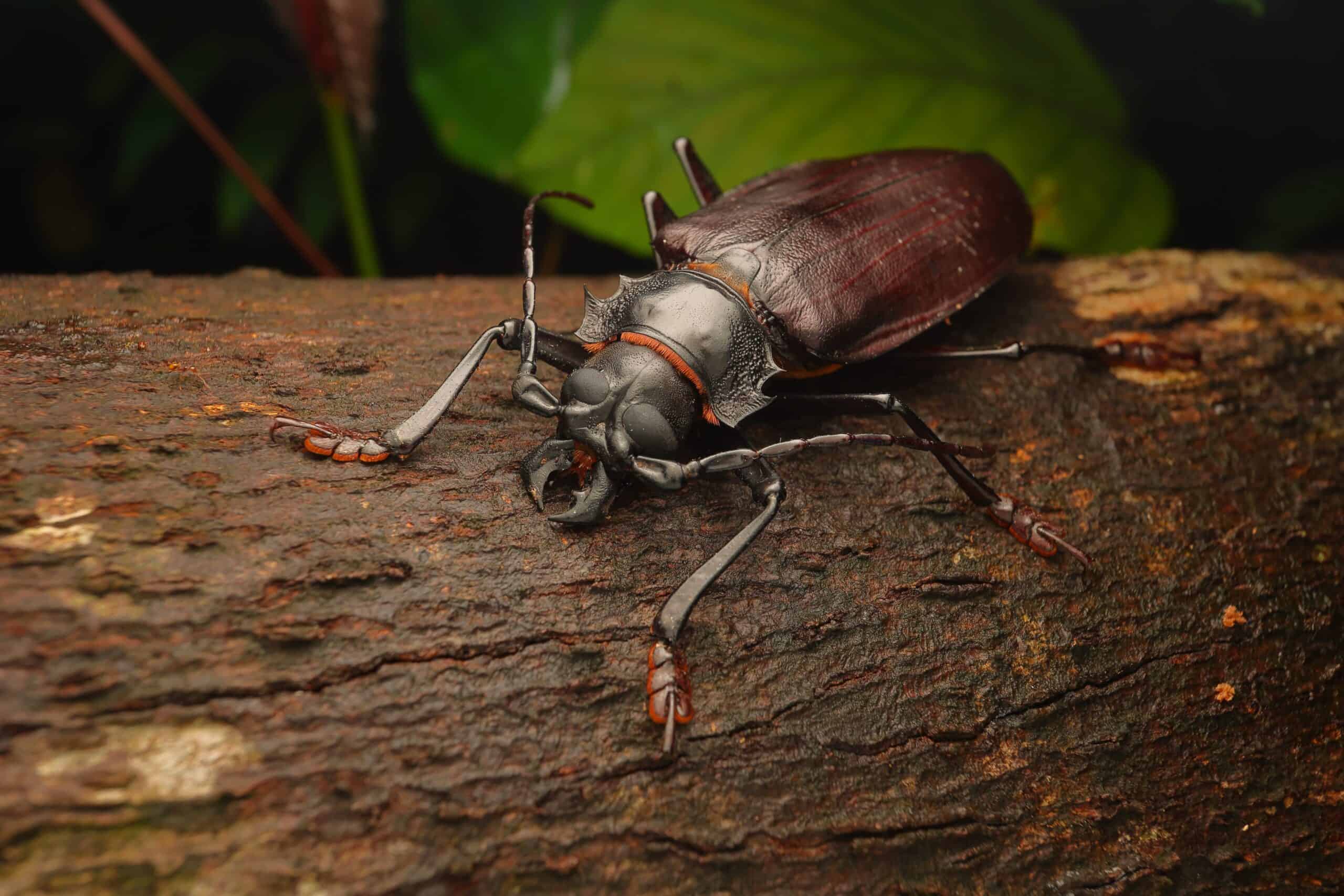
The Titan Beetle is a massive insect, capable of reaching lengths of up to 6.5 inches. Its jaws are so strong that they can snap a pencil in half. Despite its fearsome reputation, the Titan Beetle poses no real threat to humans. It spends most of its time on the forest floor, where it hunts for wood-boring grubs. Its large size and powerful jaws make it one of the most awe-inspiring beetles in the jungle.
Leafcutter Ant (Amazon Rainforest)
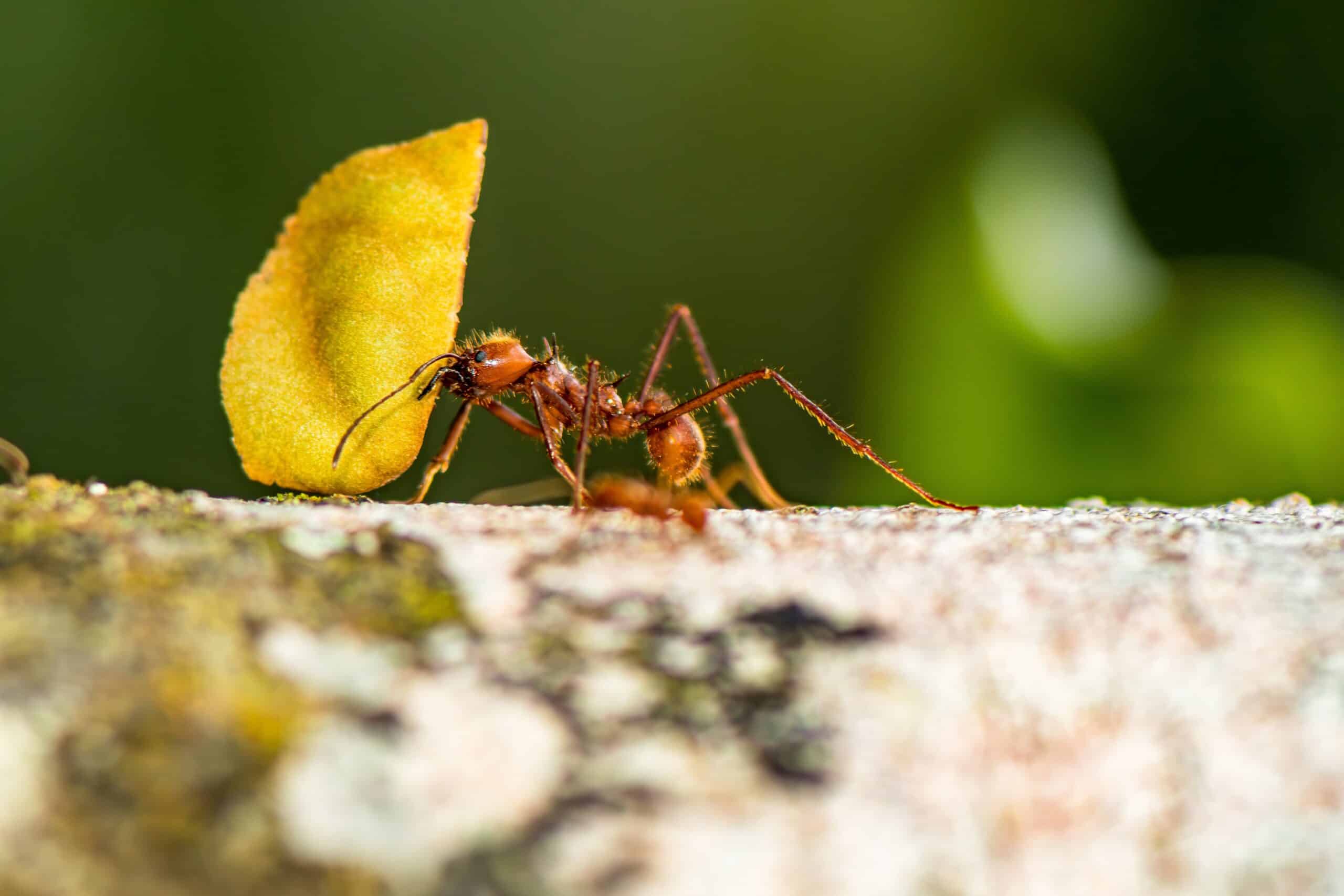
Leafcutter ants are known for their impressive ability to cut and carry large pieces of leaves. They use these leaves to cultivate fungus, which serves as their main food source. Each colony can consist of millions of ants, all working together to maintain their intricate underground farms. These ants have sharp mandibles that allow them to slice through plant material with ease. Despite their small size, their teamwork and agricultural skills are extraordinary.
Giant Water Bug (Southeast Asian Rainforests)
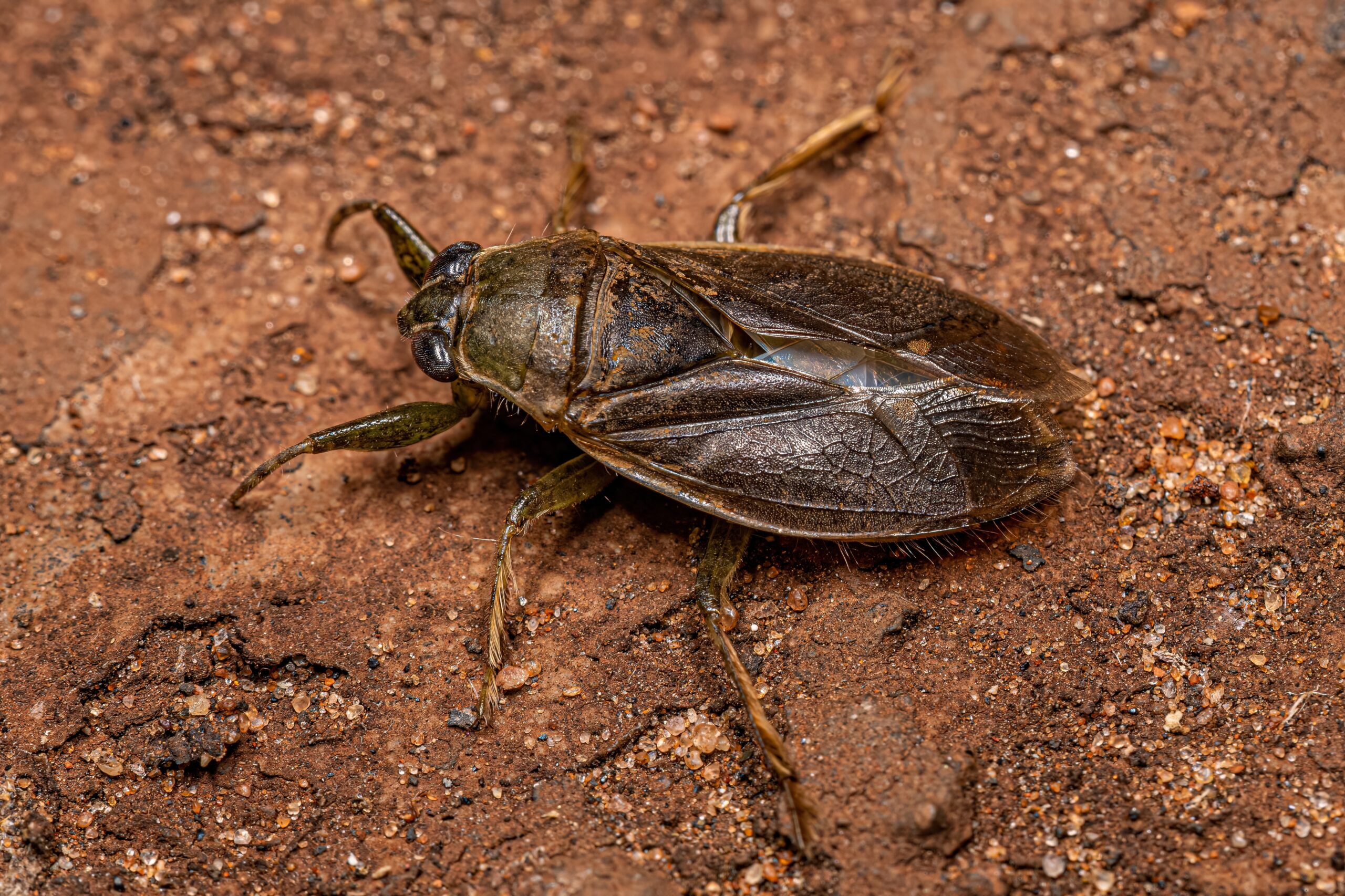
Giant water bugs are powerful aquatic predators, often referred to as “toe biters.” They have large, flat bodies and strong legs designed for swimming. These bugs use a sharp, needle-like beak to inject venom into their prey, which can include fish and amphibians. Though they can fly, they spend most of their lives in water. Their bite is painful but not dangerous to humans.
Amazonian Giant Centipede (Amazon Rainforest)
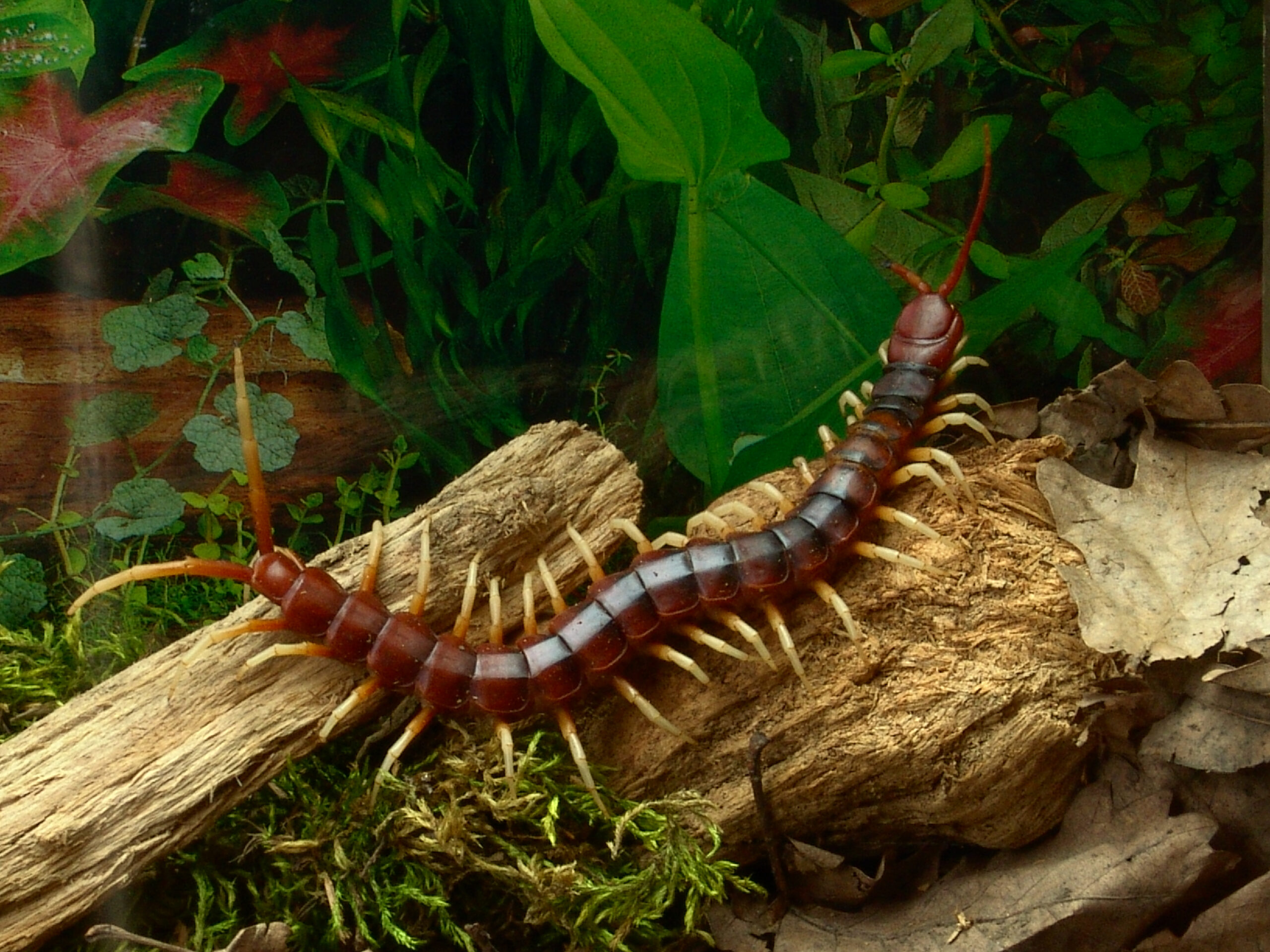
The Amazonian giant centipede is one of the largest centipedes in the world, growing up to 12 inches long. Its body is segmented with numerous legs, allowing it to move quickly across the jungle floor. It is a fierce predator, known for hunting insects, spiders, and even small vertebrates like mice and lizards. This centipede uses venomous fangs to paralyze its prey before devouring it. Its bold hunting style and large size make it a feared creature in the Amazon.
Harlequin Beetle (Amazon Rainforest)
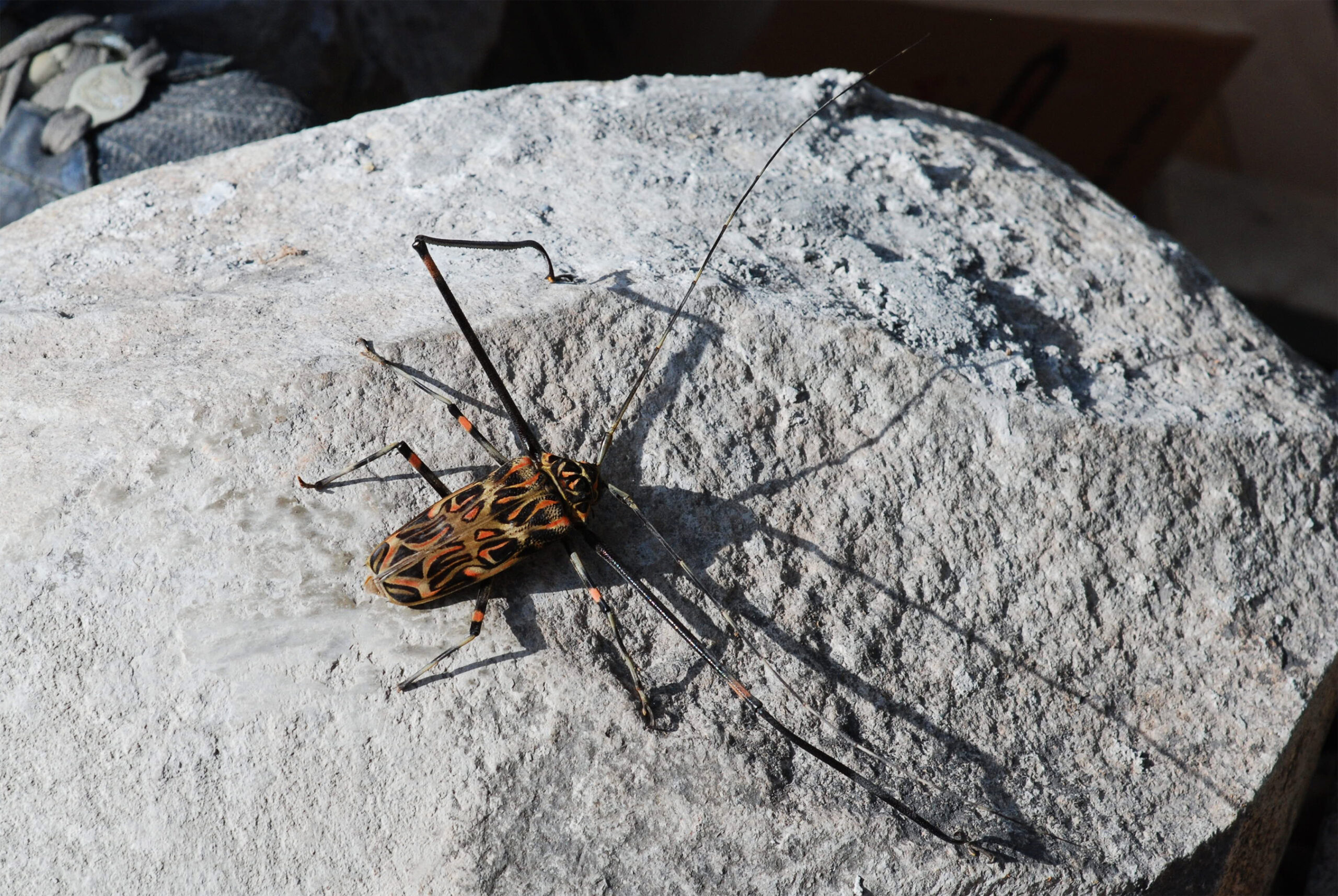
The Harlequin beetle stands out with its striking black and orange patterns on its elongated body. It has long legs, particularly the forelegs, which it uses to climb trees. This beetle feeds on tree sap and decaying wood, helping break down organic material in the jungle. Males are known for their large size and sometimes engage in fights over mates. Their bright colors serve as a warning to potential predators, signaling that they are toxic.
Bullet Ant (Rainforests of Central and South America)
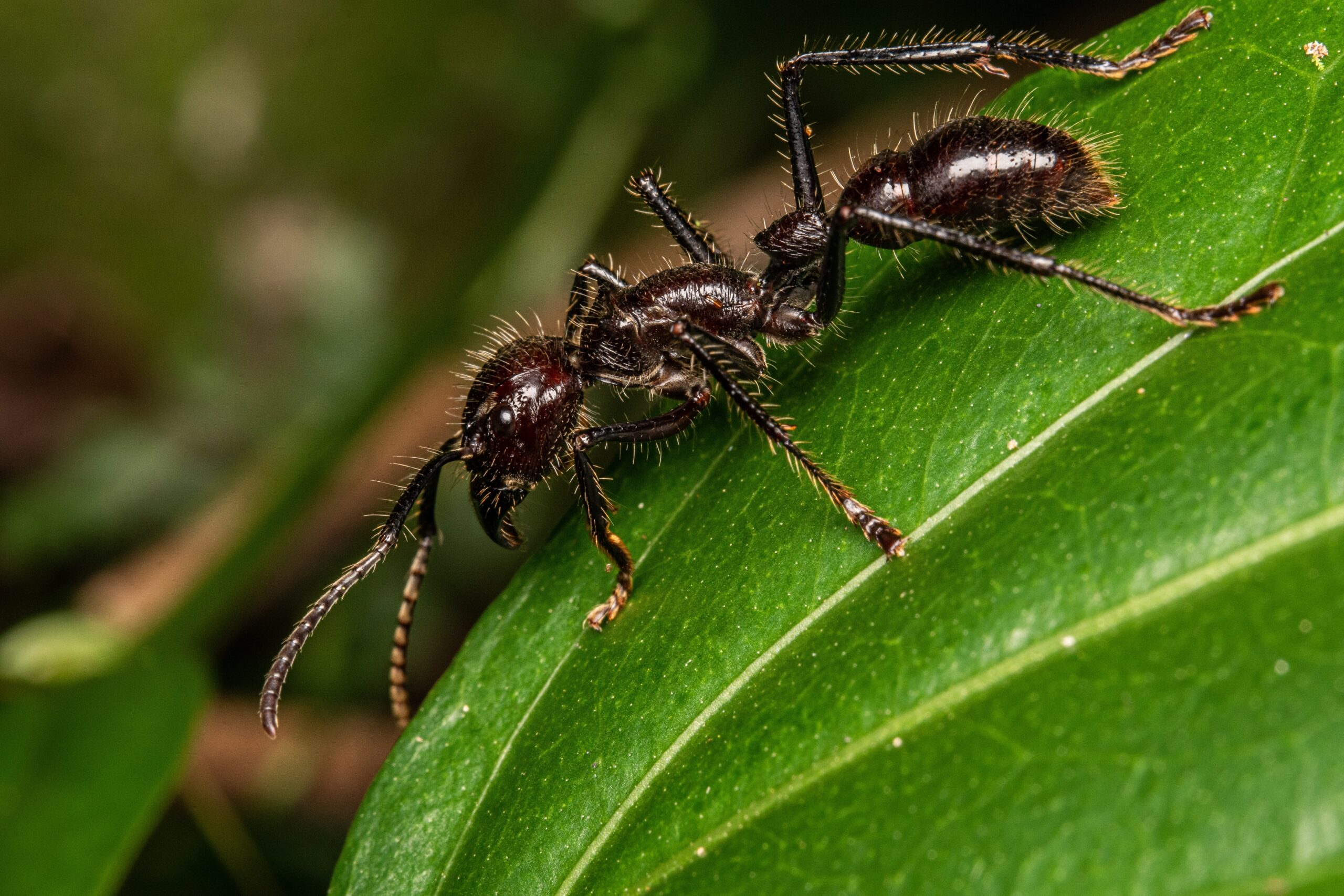
The bullet ant is infamous for its extremely painful sting, often compared to being shot, hence its name. These large ants can grow up to an inch in length. They live in colonies on the forest floor and are fiercely protective of their nests. When threatened, they release a powerful toxin through their stinger that can cause intense pain lasting for hours. Despite their reputation, they play a vital role in the jungle’s ecosystem by controlling insect populations.
Ghost Mantis (Madagascar Rainforest)
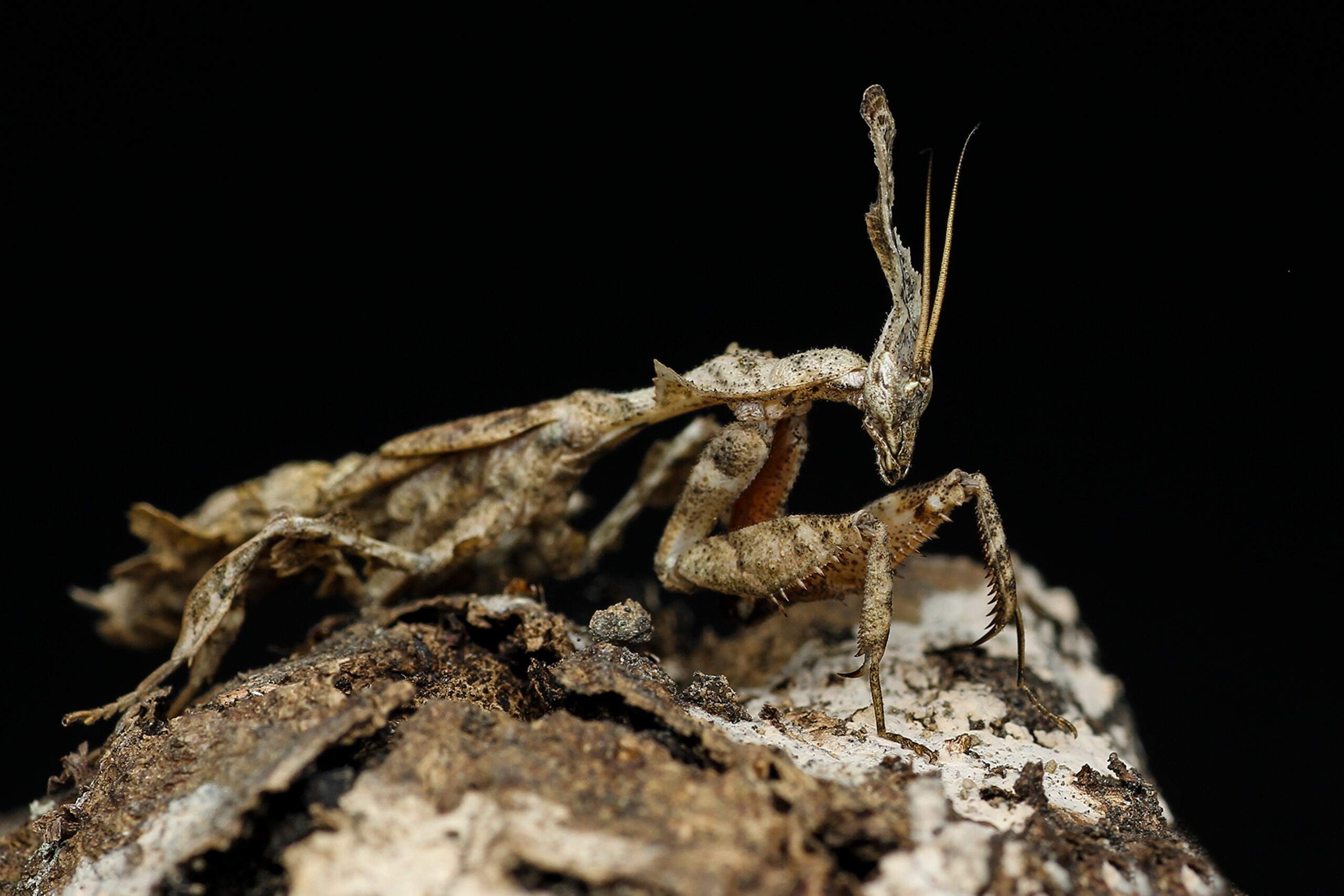
The ghost mantis is a master of camouflage, mimicking dead leaves to avoid detection. Its thin, brown body blends perfectly with its surroundings, making it nearly invisible to both predators and prey. This mantis is a patient hunter, waiting motionless until an insect comes within reach of its spiny front legs. Its leaf-like appearance also helps it avoid becoming prey for birds and larger insects. The ghost mantis is both beautiful and deadly in its environment.
Stick Insect (Borneo Rainforest)
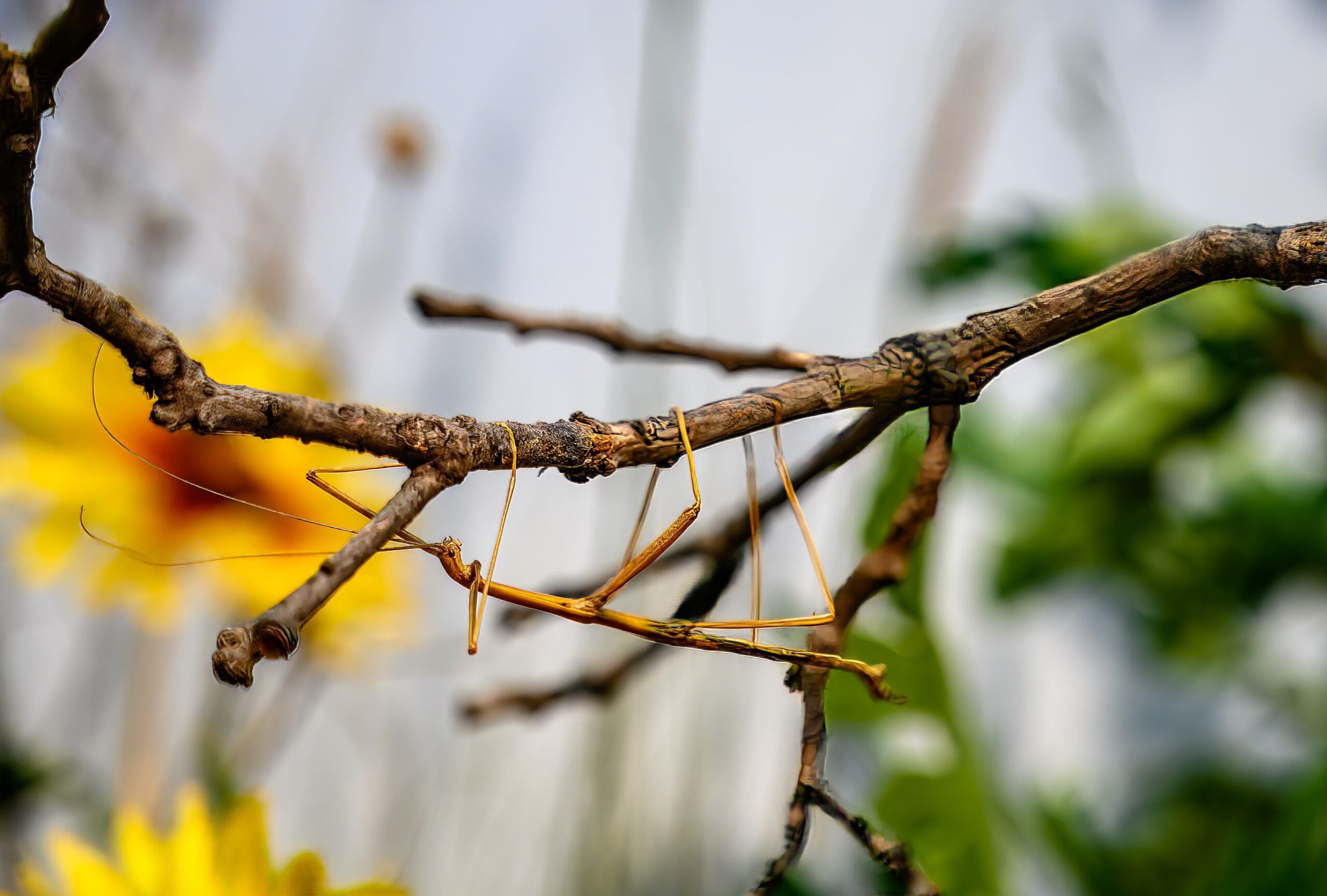
Stick insects, as their name suggests, closely resemble twigs or branches, making them difficult to spot in the dense rainforest. They are herbivores, feeding on leaves and plant material. Their long, slender bodies help them blend seamlessly into their surroundings, providing them protection from predators. Some species can grow over a foot long, making them one of the largest insects in the world. They rely on stillness and camouflage for survival in Borneo’s rainforests.
Peanut-Head Bug (Amazon Rainforest)

The Peanut-head bug gets its name from its odd, peanut-shaped head. This feature, along with its bright coloring, helps deter predators by making it appear larger and more intimidating. These bugs feed on tree sap, using their long, straw-like mouthparts. They also have large, eye-like markings on their wings that resemble the eyes of a predator. These defense mechanisms allow the Peanut-head bug to thrive in the Amazon’s dense foliage.
Brazilian Treehopper (Amazon Rainforest)
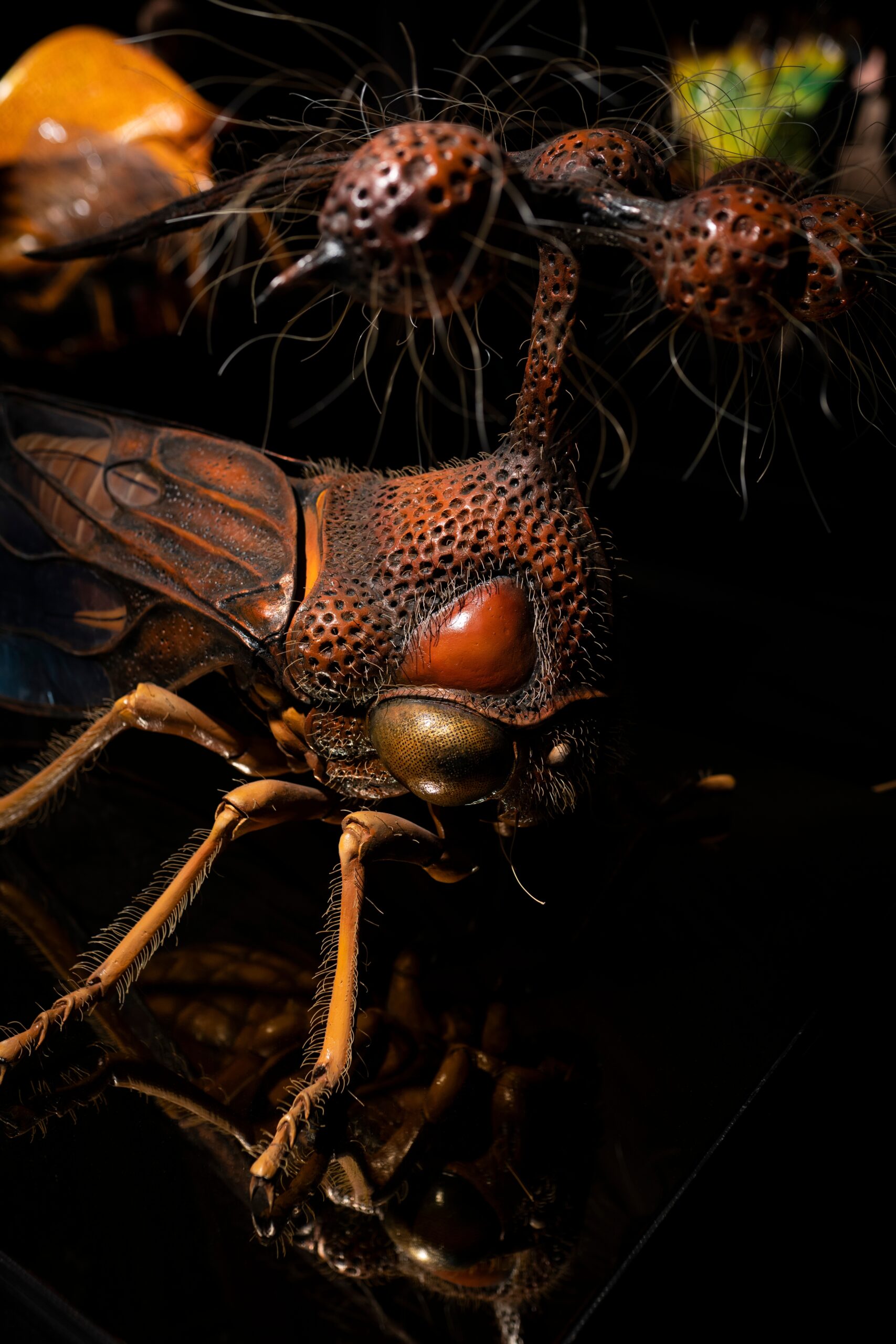
The Brazilian Treehopper is known for its bizarre appearance, featuring a strange, spiky structure on its head. This peculiar feature serves to confuse predators, making the insect seem more dangerous than it is. Treehoppers feed on plant sap using their straw-like mouthparts. Despite their small size, they play a crucial role in the ecosystem, helping to manage plant populations. Their unique head structure has fascinated entomologists for decades.
Leaf-Mimic Katydid (Amazon Rainforest)
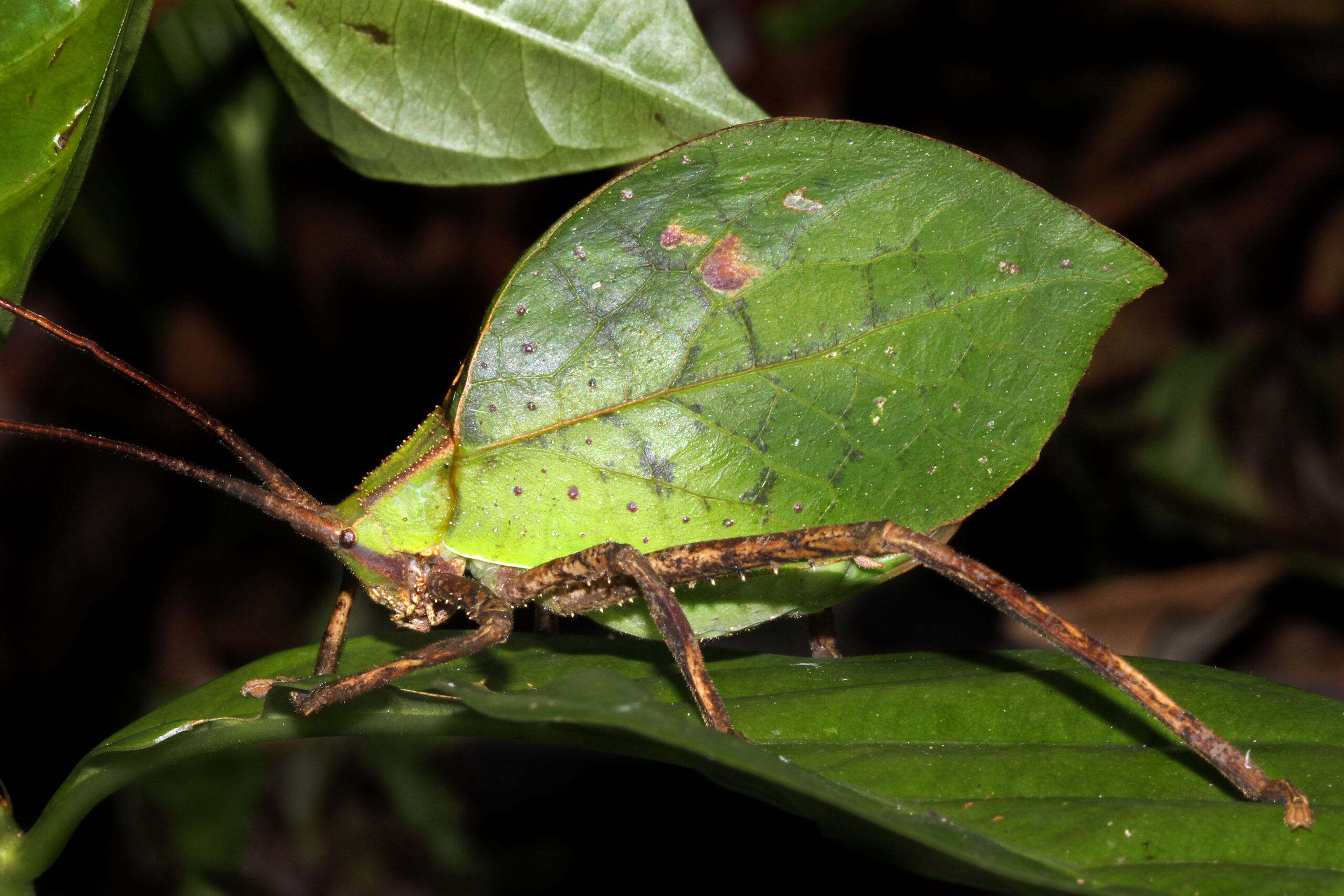
The Leaf-Mimic Katydid is a true master of disguise, blending seamlessly with the leaves it rests upon. Its body mimics both the shape and color of a leaf, complete with veins and imperfections. This camouflage helps it avoid detection by predators. It is primarily nocturnal, feeding on plant material under the cover of darkness. During the day, it remains motionless, relying on its disguise for protection.
Feather-Horned Beetle (Rainforests of Papua New Guinea)
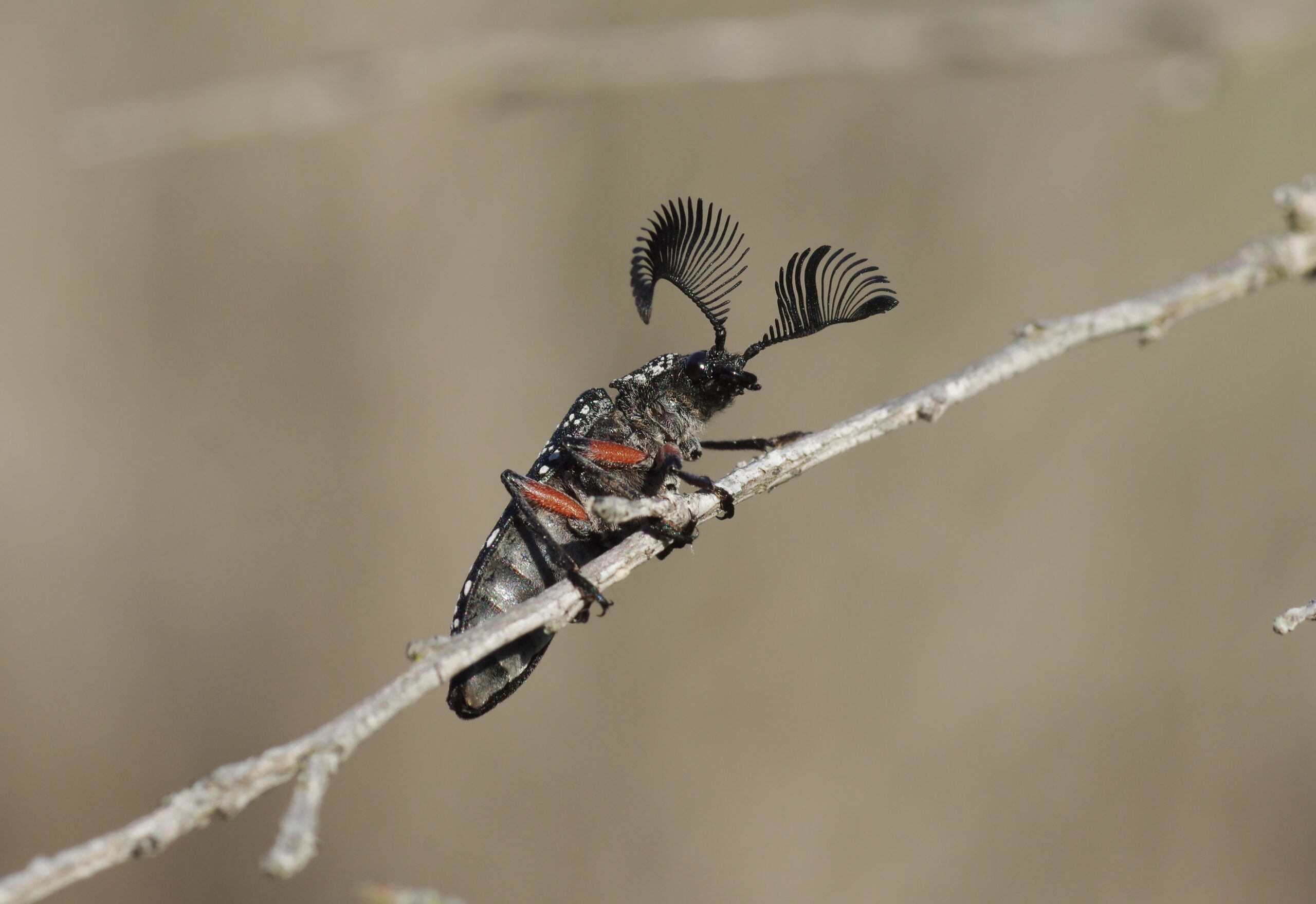
The Feather-Horned Beetle stands out with its feather-like antennae that stretch far beyond its body. These unique appendages help the beetle detect pheromones in the dense rainforest. Its body is slender and black, helping it blend into the forest floor. It spends most of its time searching for mates or food. Despite its strange appearance, it is a harmless insect that plays a role in breaking down decaying plant material.
Blue Morpho Butterfly (Amazon Rainforest)
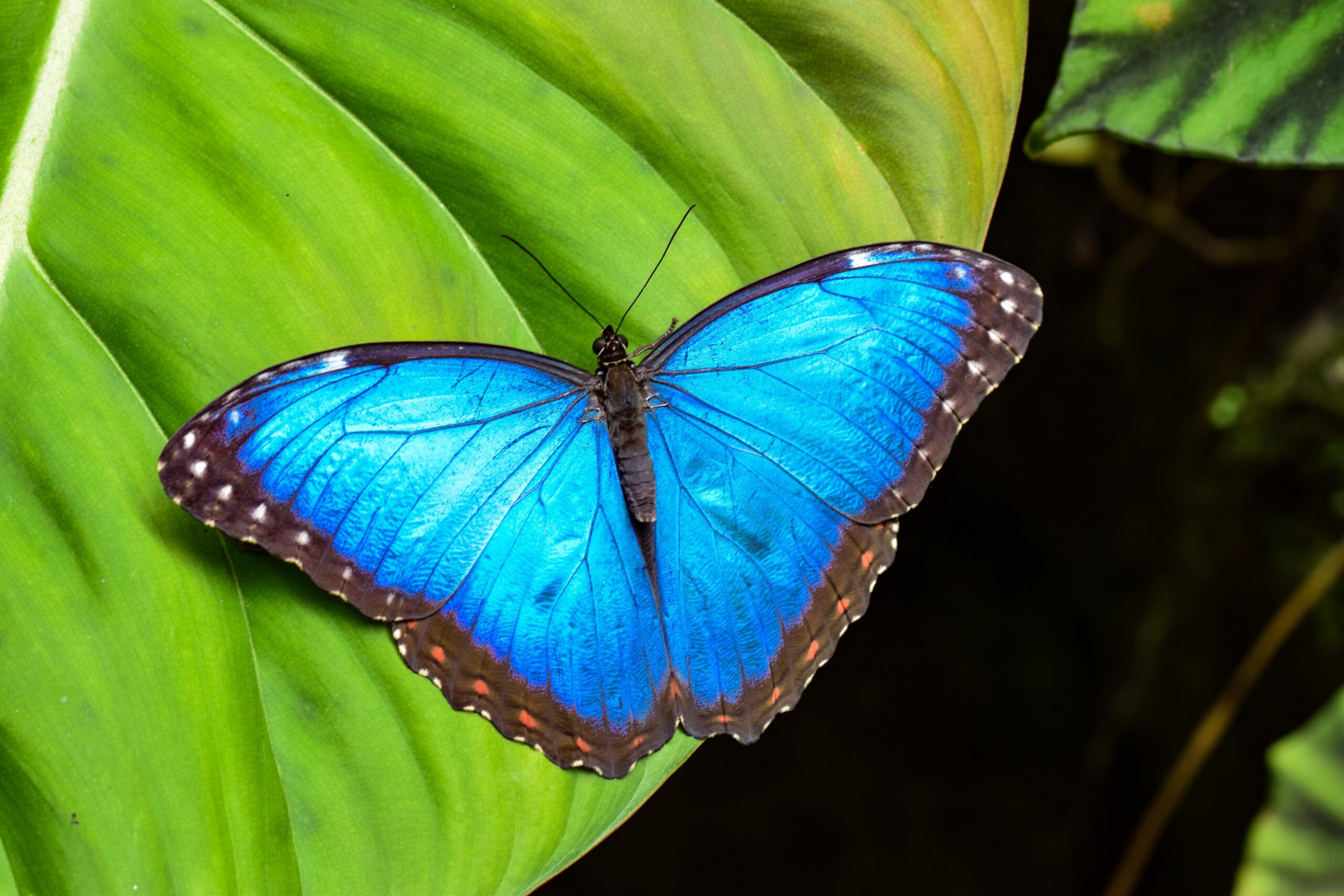
The Blue Morpho Butterfly is known for its vibrant, iridescent blue wings. When in flight, the butterfly’s wings flash between bright blue and brown, confusing predators. It spends most of its time near the forest floor, feeding on rotting fruit and fermenting juices. Males are territorial, often seen chasing away rivals. Their dazzling color and graceful flight make them one of the most iconic species in the Amazon.
Hercules Moth (Australian Rainforests)
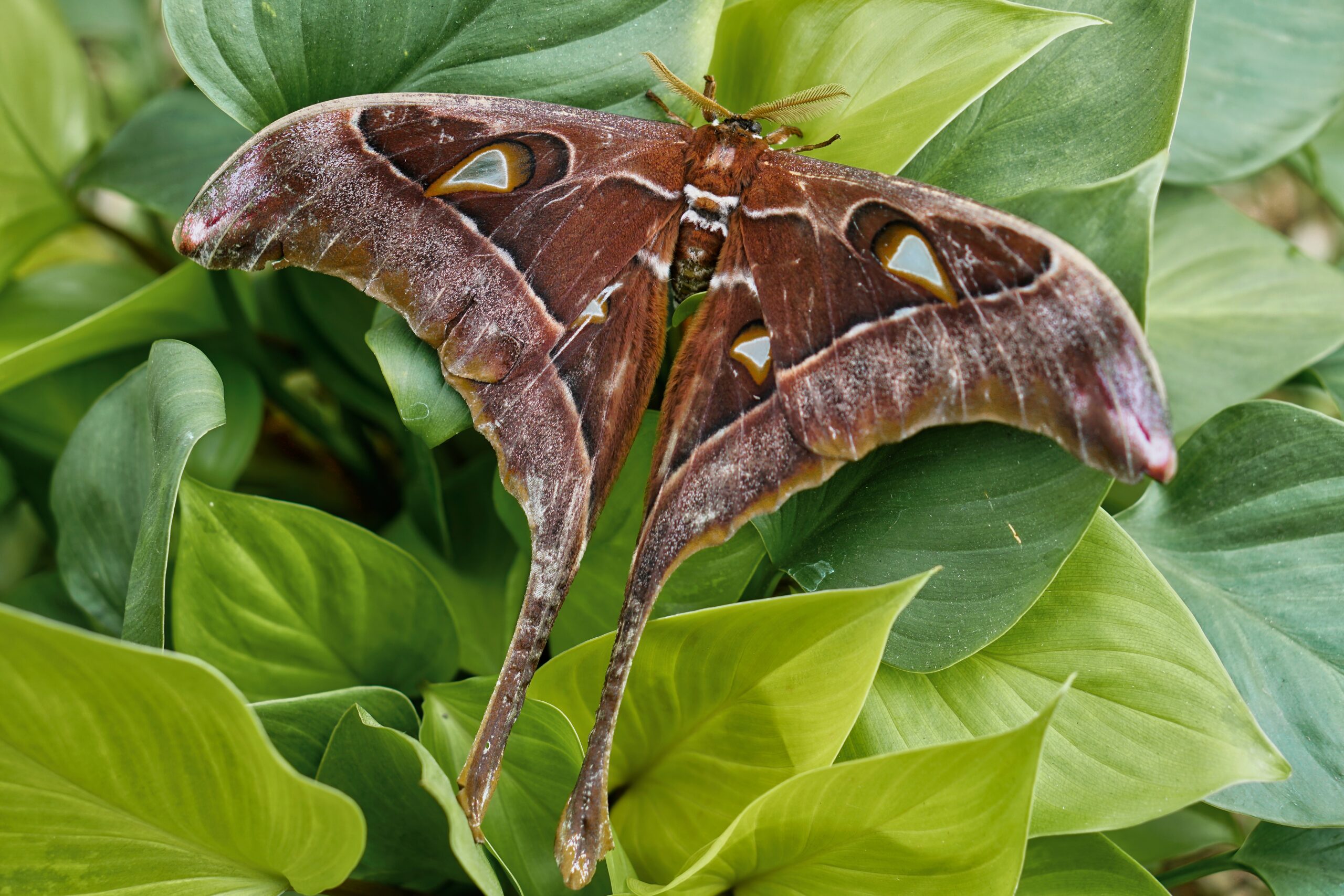
The Hercules Moth is one of the largest moths in the world, with a wingspan that can reach up to 14 inches. Its wings are brown with eye-like markings that deter predators. As adults, Hercules Moths do not feed, relying on energy reserves built up during their caterpillar stage. Their large, caterpillar form is bright green and feeds voraciously on rainforest leaves. The moth’s short adult life is dedicated solely to reproduction.
Assassin Bug (Tropical Rainforests Worldwide)
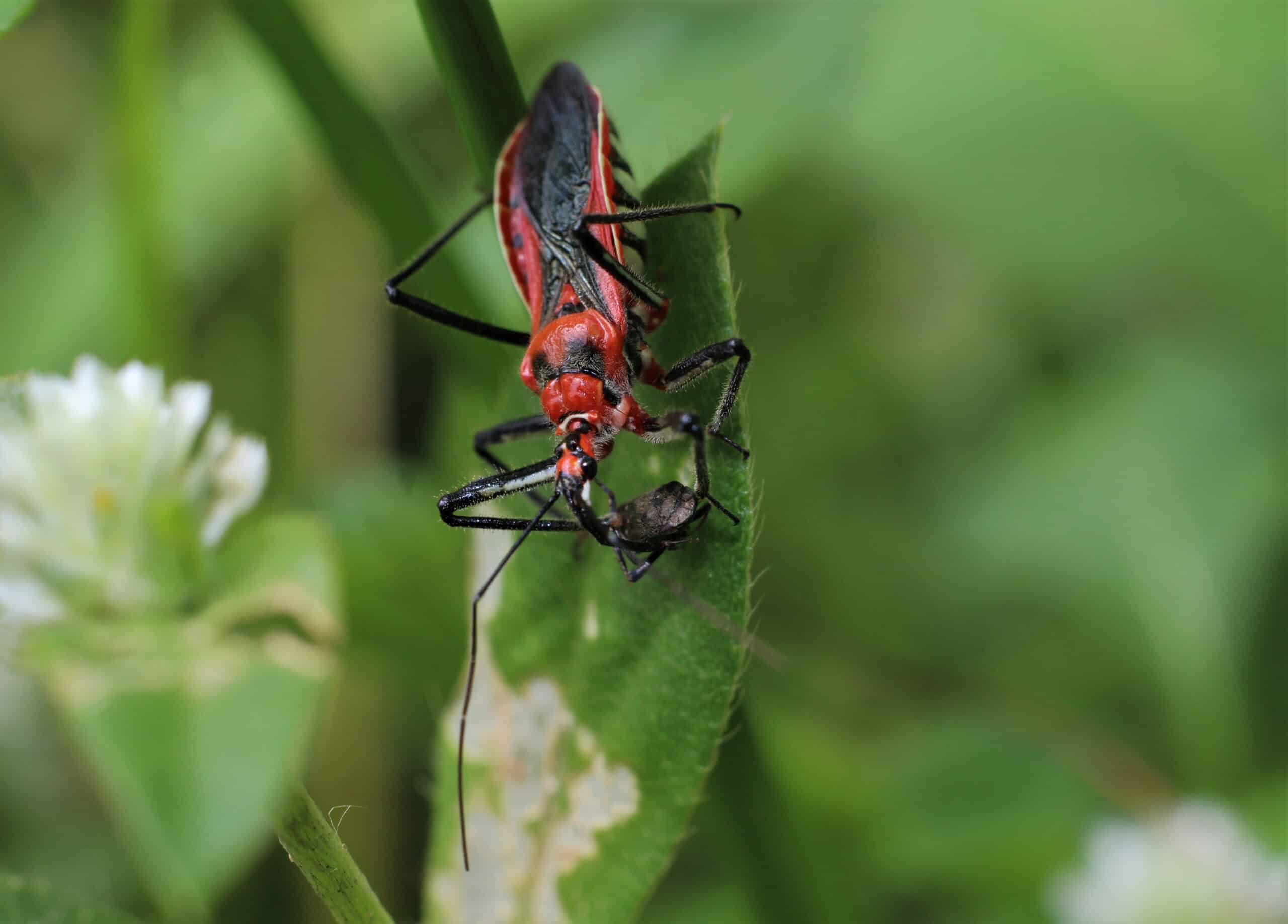
Assassin Bugs are fearsome predators, using their long, needle-like mouthparts to inject venom into prey. They are often found stalking other insects in the dense foliage of tropical rainforests. After subduing their prey, they suck out the liquefied insides, leaving behind only the exoskeleton. Some species even camouflage themselves with debris for better hunting. Their aggressive behavior and hunting prowess make them formidable insects in their habitat.
This article originally appeared on Rarest.org.
More from Rarest.org
23 Endangered Reptiles Fighting for Survival in the Wild

Reptiles across the globe are struggling to survive in their natural habitats. Due to habitat loss, poaching, and climate change, many species face the brink of extinction. Read More.
21 Extraordinary Birds That Migrate Over Impossible Distances

Some birds defy nature by migrating over vast, seemingly impossible distances. These remarkable travelers cover thousands of miles across oceans, continents, and harsh landscapes. Read More.
9 Most Intriguing Archaeological Discoveries of the Last Decade

Over the past decade, archaeology has uncovered remarkable discoveries that continue to reshape our understanding of ancient civilizations. Read More.
